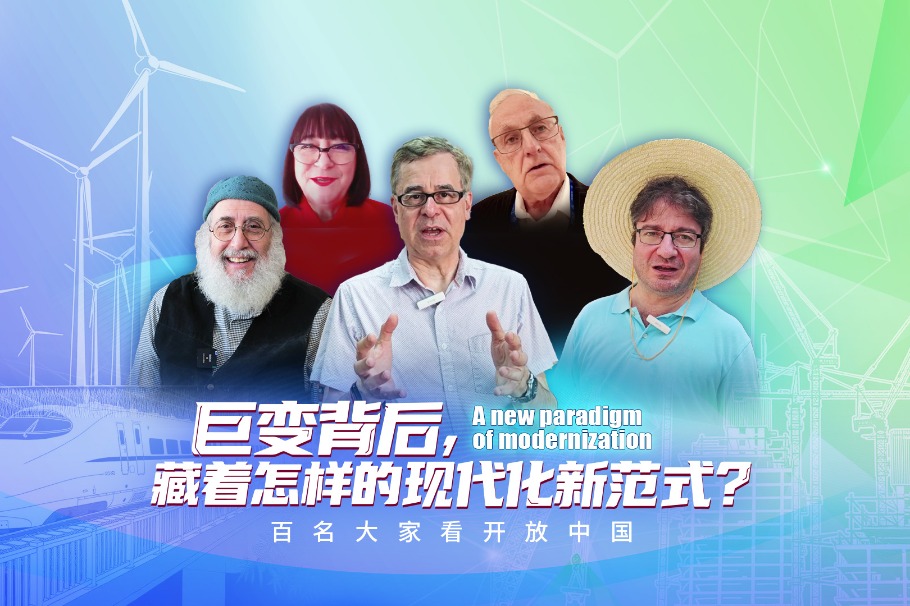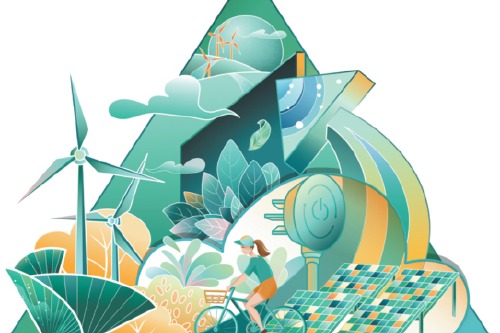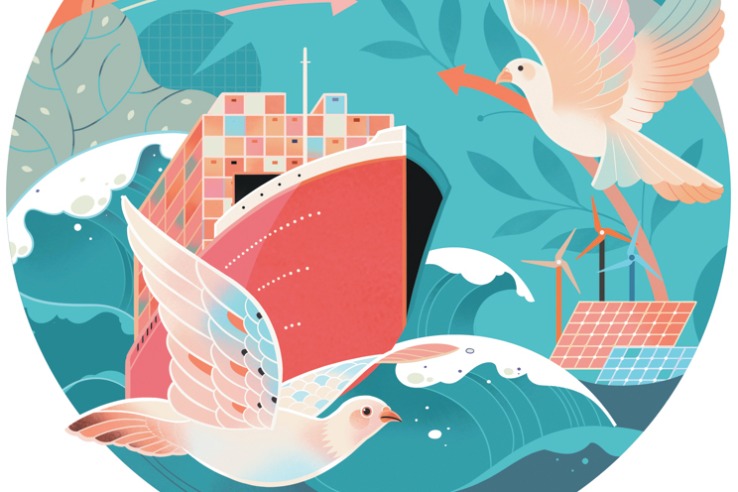Make and reuse


Resource recycling is playing a vital role in China's carbon neutrality solutions
China's carbon-neutral target provides the strongest policy impetus ever to accelerate the country's transition to a zero-carbon future. While it is generally agreed that this transition calls for a disruptive transformation of how we produce and consume energy, including electrifying what is possible, decarbonizing power generation and scaling up green hydrogen, bioenergy and carbon capture, utilization and storage for the harder-to-abate sectors; resource recycling, as a way to reduce demand for more carbon-intensive primary products, is among the most effective and cheapest means to cut carbon emissions.
As the Rocky Mountain Institute, an independent non-profit organization focusing on clean energy transition, and the Energy Transitions Commission set out in the November 2019 report "China 2050: A Fully Developed Rich Zero-Carbon Economy", it is technically and economically feasible for China to achieve zero carbon while still growing its economy. The RMI's new report, "Growing the Circular Economy: Opportunities for Resource Recycling in a Zero-Carbon China", further points out that more than 30 percent of carbon reduction could come from the development of resource recycling-related industries in China, cutting emissions by 40 billion metric tons between now and 2050 accumulatively.
The field of resource recycling and utilization is broad and diverse, from product recycling and waste biomass reuse to electric vehicle batteries recycling and more. Product recycling in energy-intensive industries will play a vital role in providing effective solutions to decarbonize the harder-to-abate sectors.
It is estimated that the development of resource recycling in these industries can achieve potential carbon reduction of 23 billion tons in the next 30 years. Compared with other means of decarbonization in these sectors, strengthening resource recycling obviously has the advantages of higher technological maturity, larger return on investment and stronger utilization of existing assets.
In fact, in some sectors, secondary production could step up to play a major role, instead of just acting as a good-to-have complement. For example, for China's steel industry, with the growth of steel scrap as a resource as China approaches massive construction retirement, the proportion of electric-arc furnace production using scrap steel as a raw material could rise from only 10 percent at present to 60 percent by 2050, reaching parity with developed countries today. This trend is highly supported by the growing supply of steel scrap, as well as the overall momentum of the carbon neutrality goal. The China Metallurgical Industry Planning and Research Institute has projected that China's scrap steel supply will reach 260 million tons by 2025 and 420 million tons by 2030.
Another example is China's aluminum industry, with secondary production already enjoying economic advantages and the energy consumption of recycled aluminum only 3 percent to 5 percent of that of producing the same amount of primary aluminum. While the demand for recycled aluminum is expected to be further boosted with the increasing trend of lightweight vehicles, newly added primary aluminum capacity, in comparison, is strictly constrained by existing policies.
For the cement and plastic industries, fully realizing the potential of resource recycling will require technology advancement. For instance, with existing solutions, recycled cement can be used as concrete aggregate, roadbed, and backfill materials. With further technology advances, unhydrated cement may be recovered from construction waste, as is being promoted by some companies such as SmartCrusher in the Netherlands, allowing for greater potential cement reuse. For plastic recycling, besides traditional mechanical recycling, rapid development of chemical recycling technologies which break down plastics into basic chemicals and transform them into more valuable products, are anticipated to grow and gain momentum, particularly after 2030. For the chemicals industry in a wider context, where carbon is the basic building block of all materials, recycling is critically important-it allows carbon to be embedded in products rather than released into the atmosphere at end-of-life disposal.
Attention to resource recycling is not only brought by its carbon reduction potential, but also because it represents some of the greatest business opportunities-not from extracting new resources from nature, but in new uses for what we have already produced. Studies by the Ellen Macarthur Foundation show that implementation of circular economy policies in Europe, mainly characterized by resource recycling in the areas of transportation, the built environment and food, will achieve an annual economic benefit of 1.8 trillion euros ($2.1 trillion) by 2030. The RMI estimates that in China, three key areas, namely, product recycling in energy-intensive industries, biomass waste as an energy source, and recycling of EV batteries for energy storage, could open up a market of over 3 trillion yuan ($464.4 billion) annually by 2050.
Of course, realizing a zero-carbon future has no one-size-fits-all solution, and these solutions are in different stages of development, from infancy to early pilots, from expansion to maturity. But when we look at how resource recycling can help transform the way we do business, we can identify key stakeholders that can take advantage of resource recycling development. As resource recycling develops, it cultivates a new ecosystem featuring a closed loop paradigm, bringing opportunities for different participants. Industrial development will no longer follow the linear model of "take-make-consume-dispose", but develop within a new business pattern formed through the integration of new circular relationships among manufacturers, solution providers and system facilitators. On the one hand, new interactions will be formed to connect the existing links of the value chain. For instance, giant steel makers are pursuing vertical integration with steel scrap-related businesses, especially in upstream dismantling and recycling, and midstream processing. On the other hand, new business opportunities can be generated to facilitate these interactions, for example, digital technology for material traceability and resource optimization.
As we seek to decarbonize the energy-intensive sectors, growing resource recycling solutions can serve as a starting point for the industry, investors and policymakers to explore the immense possibilities. But actions from all sides will be needed to fully reap the benefits.
The author is a senior associate at the Rocky Mountain Institute. The author contributed this article to China Watch, a think tank powered by China Daily.
The views do not necessarily reflect those of China Daily.


































